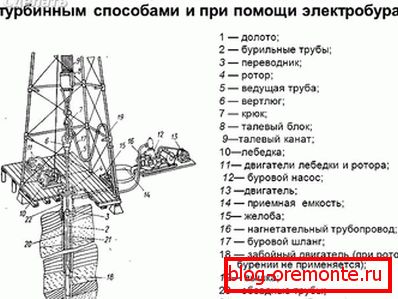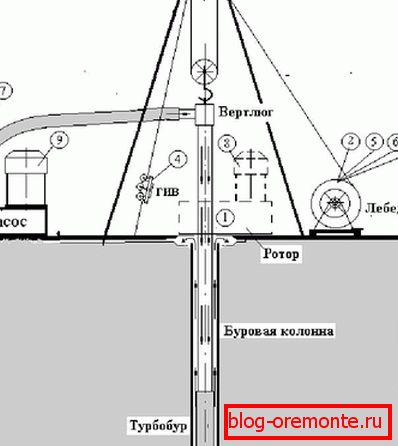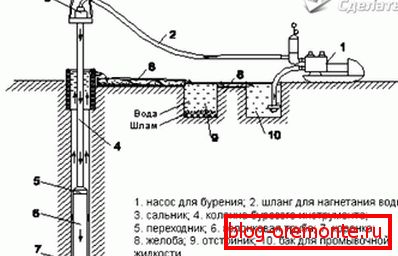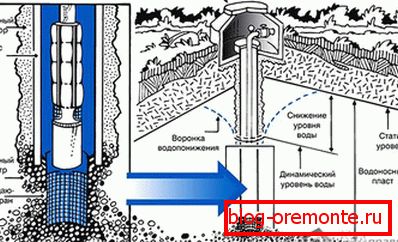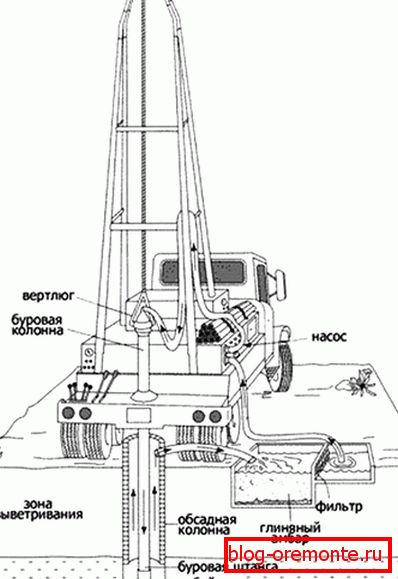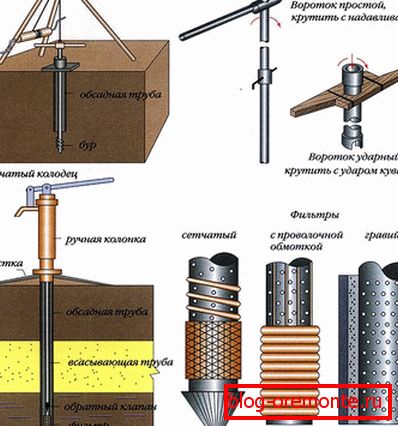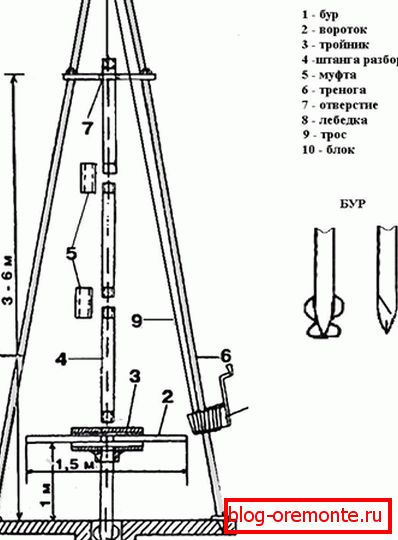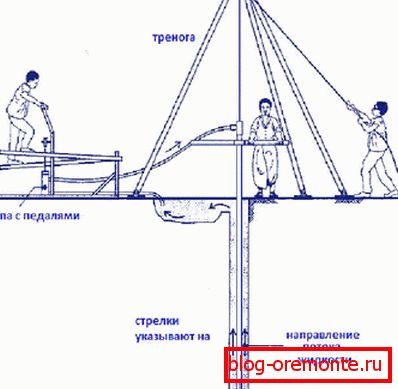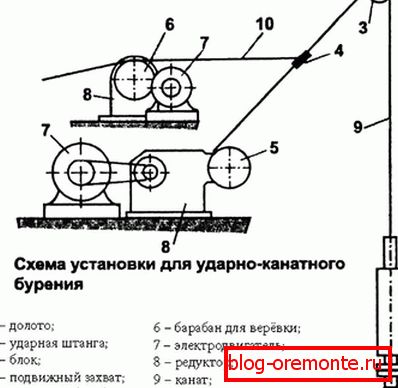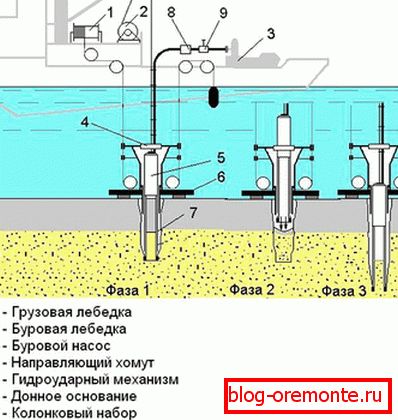Diy well drilling
Each country site needs a source of water. To get a water resource, it is necessary to equip a well or a well. In this article, we will describe the technology of drilling a well with our own hands, consider various methods (percussive drilling, using water), and also show video instructions.
Before you start work, you must:
- clarify where and at what depth the aquifers are located on the site;
- find out what type the soil belongs to;
- using previous data, select a specific type of well.

There are two types of wells:
- Abyssinian well - from 3 to 12 m depth.
- Sandy - up to 20-30 m.
When setting up wells, it is recommended, if possible, to choose a place where aquifers do not lie deeper than 20 m, since such depth forces to use more complex construction equipment.
The diameter of the well is determined by the diameter of the hand drill and the pipe that will be placed in the hole made in the ground. The standard diameter of the pipe does not exceed 11-12 cm. Hence, the diameter of the well should not be less than 14-15 cm.
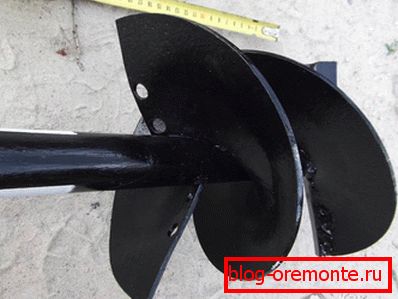
As a tool with which you can make a hole in the ground, the following types of drills can be used:
- auger drill,
- drill bit
- drill in the form of a spoon.
If there is groundless soil on the plot, it is wiser to use a spoon. For hard soils it is recommended to use a drill bit. It is best to work with mixed soils with auger auger.
Arrangement on the site
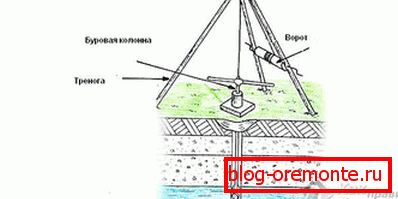
- When choosing a place for drilling, it is necessary to consider that the well should be located in a place remote from the drain holes or other sources of pollution.
- First, in the area of the future well, it is necessary to remove the top layer of soil, 1.5–1.5 m in size to a depth of no more than 1 m. Such a measure will prevent the soil from entering the prepared well.
- For the convenience of organizing a water source, you need to build a tripod. The tripod is easy to make yourself using logs with a diameter of 15-20 cm or a wooden beam with a size of 100x150 mm. Installation is carried out as follows: the logs are stacked on the ground in the form of a triangle, and the place of their connection is securely fixed. Gently lifting the tripod, you need to firmly install it so that the junction where the winch will be attached, was exactly above the place of the future drilling.
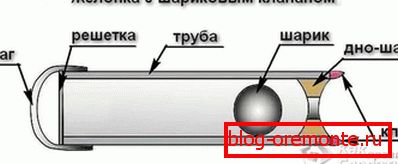 Noting the place where the hand drill will be installed, you need to lay the rest of the open ground with wooden shields - this will not allow the soil to crumble while drilling.
Noting the place where the hand drill will be installed, you need to lay the rest of the open ground with wooden shields - this will not allow the soil to crumble while drilling.- The well is best organized using a hand drill. This drill is called auger, and has the ability to increase the length of the handle with an additional metal rod. A cable is fixed near the serpentine constituting the cutting edge of the drill, the other edge of which is fixed on the winch suspended from the tripod.
- Before starting work, a distance of 50-60 cm is marked on the rod - it is to that depth that the drill should be advanced. After reaching the mark, it is necessary to remove the screw auger from the hole in the ground by means of a handle or later using a cable and clean it thoroughly. By adding metal bars to extend the drill, another 50-60 cm should be measured from the original mark.
- As soon as the aquifer is exposed at a certain depth, drilling should continue to the impermeable layer.
- To clean the water in the well is required to use the shell. When the amount of soil lifted with it is practically reduced to zero, it is required to install a casing with a filter in the hole. Before placing the filter in the form of a metal pipe with a grid or small holes, experts recommend laying a layer of gravel on the bottom of the well.
- The stability of the pipe is ensured by gravel poured into the space between the soil and the pipe walls.
- A pump lowered into the well must be installed so that it is completely submerged in water and delivers clean water to the surface.
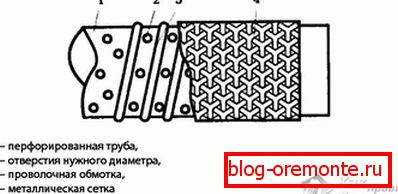
It is possible to protect the well from external contamination with the help of a roof mounted directly above it.
Percussion drilling

Drilling rig device
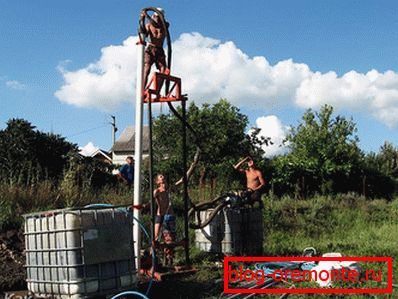
For the work will need to collect the following material:
- Drill shell. The shell is selected based on the type of soil, for example, it can be a chisel, a shell or a glass.
- Cable or rope.
- Shock rod.
- Tower with a winch and block.
The main tool of the drilling rig is a driving glass. Here are its distinctive features:
- The glass is a length of pipe, at the bottom of which a cutting edge made of durable metal is welded. This edge has a bevel inside the projectile.
- Due to the edge, the device can go deeper into the ground upon impact.
- On top of the glass an anvil is formed, on which the barbell hits.
Among other things, this technology requires the use of a tower. It can be done independently, giving the shape of a tripod:
- It is possible to weld a design from a pipe. If this is not possible, wooden bars can be used.
- The height of the tower must be greater than the length of the drill. This is important, because the projectile, for example, a glass, must be raised above the ground level completely.
- A block is installed on top of the structure. A cable or rope will pass through it.
- To lift the projectile, you can use a simple structure of the type of gate, which is used in the well.
Drilling with a drop glass
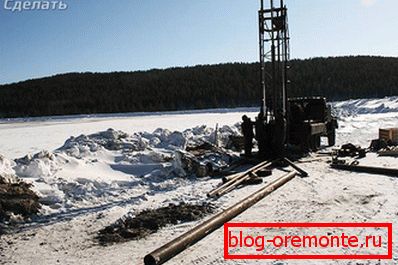
The following describes the process of drilling glass. Works are carried out as follows:
- With the help of a winch lift the projectile above the bottom, then sharply lowered.
- Upon impact of the glass on the seam, the projectile captures part of the soil.
- When lifting the glass up, due to friction, the soil is kept on the walls.
- For deeper penetration it is necessary to use a shock bar. To begin with, raise it, and then lower it. With such actions, the bar hits the drill projectile, which captures more soil.
- After several strokes of the bar, the glass rises to clear it from the ground.
- After this, the percussion drilling process continues in the same manner.
The technology of percussive drilling using glass is possible only on loose and soft soils. For example, if the soil benefits from sand, then given the fact that sand particles are not interconnected, the friction force will not be able to keep the sand in the glass.
Below we describe the technology of percussive drilling on loose soils.
Drilling on loose soils
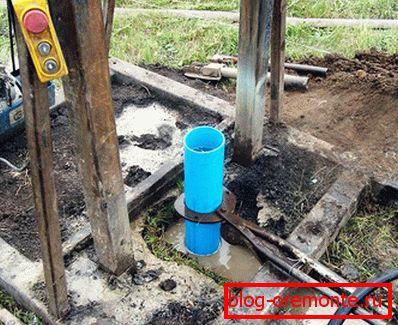
If the soil consists mainly of sand, then a shell is used as a shell. This instrument consists of the following structure:
- At the bottom of the shell there is a valve that opens upon impact on the ground. As a consequence, the ground gets inside the projectile.
- When the shell rises, the valve closes under the pressure of the existing soil. As a result, the contents are removed outside.
- After cleaning the bout, drilling continues.
Often, with percussive drilling, one can find a homogeneous, flowing soil or its layers. And to prevent falling asleep it is necessary to do the following:
- In the process of drilling the barrel is strengthened by the casing.
- On the very first pipe should make an expansion boot, cone-shaped.
- In the process of deepening the casing sections under their own weight or with neat impacts are deepened.
The casing section must be larger than the diameter of the yolk. This will ensure free movement of the projectile inside the pipe.
Drilling on hard ground
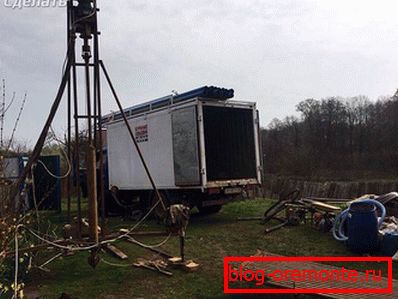
If the soil is stony, then a drill bit is used in percussion drilling. With powerful blows, the chisel breaks / breaks away particles of solid ground. Crashed particles are lifted out by the sludge.
If the work is carried out on hard ground, the casing pipe will not be able to cut the soil on its own. Therefore, you will need to use special movable cutters, which will expand the diameter of the trunk.
In order to lower the cutters, the cutters should be folded so that the device fits into the casing. Upon reaching the desired depth under the influence of springs, the device is brought to a working condition, thereby cutting off the soil from the walls of the trunk. As a result, the casing is lowered.
What if there are intermediate aquifer lenses in the drilling process? In this case, the installation of the casing. If this is not done, water will simply flood the face, which will impede the work. To do this, the lower edge of the column rests on the soil layer, which is below the water level. After siphoning the water and zhelonkom eliminate breed.
Important nuances
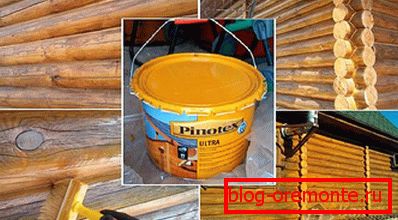
Before and during the percussion drilling process, certain nuances should be observed, which are described below:
- Immediately before drilling, it is recommended to dig a hole with sides of 1.5–5 m to a depth of 2 m. This is necessary so that the soil does not collapse into the face during the drilling process. Strengthen walls of the hole with boards from boards, and build a drilling rig above the place of work.
- In manual or pneumatic drilling, the evenness of the face should be observed. This can help elongated projectile. The optimal length is 2 m.
- A cable or rope must have an adequate margin of safety. It must withstand the weight of the shock bar and the drill string. In addition, it must withstand the load on the gap when raising the projectile, which is clogged in the soil.
- Given the fact that the projectile can jam, the diameter of the cable is recommended not less than 10 mm.
Water drilling
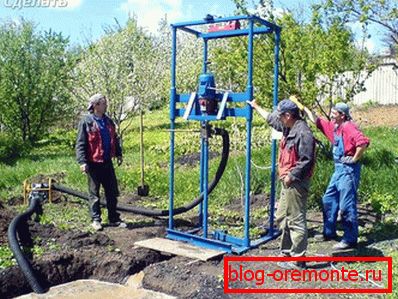
Oddly enough, but you can get water from the ground by water itself. More precisely, to formulate it, then water is used for drilling under high pressure. The principle of this technique is that under high pressure water is able to break up the rock in its path, destroying it into particles, and then washing it out. To perform water drilling work it will be necessary to prepare the following equipment:
- water tank;
- electric generator;
- high pressure hoses;
- hydro drilling installation.
In this work, the main thing is to properly organize the drilling process, since the installation itself does not have complicated technical subtleties. Then you can learn more about the technology works.
Drilling process

First of all, it is necessary to make drilling in a small way in any way. Drilling is performed to the extent that the casing enters up to half of its length. After that, arrange the water supply to the tip of the drilling rig. The installation itself is lowered all the way into the casing. After turning on the generator, an electric motor starts working, which supplies water through a hose. This motor can create a lot of pressure. The pressure itself is further enhanced by narrowing the hose to the end of the installation.
The flow rate of water is fully proportional to the diameter of the cross section of the outlet. And due to the high pressure of water, the process of leaching of rock particles is carried out.
Due to the pressure inside, sand and water rise from the well to the outside. During the drilling, the operator is required only to lower the drilling rig in time to the casing and to create translational or rotational movements of the rig. In the process of advancement, it is necessary to build up the casing in time. The entire drilling cycle is repeated.
With regard to the use of water, then drilling is used as flowing, and previously used fluid. But there is one nuance. If during drilling to use water according to the principle of a closed cycle, the drilling process is significantly accelerated. Moreover, water that has sand particles in it is capable of assisting, under pressure, great destructive actions. The only problem that may arise is the clogging of the hoses and the delivery jet.
Drilling without installation
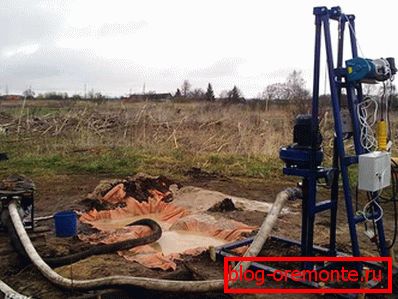
If you do not have special equipment, then water drilling can be carried out without it. For this you can use homemade devices, but they do not have such high reliability. The only advantage is ease of operation. So, for this you should prepare such material:
- metal pipe;
- compressor;
- several pumps.
Take a pipe up to 1 m long, it is desirable that it be thick-walled. At the bottom of the pipe fix 2 or 3 tubes of small size. They should organize the flow of water. A pump is mounted at the top of the pipe. The drilling process itself is similar to the one described above. At the same time, it is necessary to turn on the pump for supplying water and pumping it to the surface.
As the deepening of the pump will be a heavy load. Therefore, craftsmen recommend using simultaneously 2-3 pumps. Especially when the depth of the well reaches 25 m.
With the use of valves
This method of drilling in the people received the name - "The barbaric method." This is due to the fact that the equipment is quite rough handling. More advanced samodelkin used for drilling water, more technologically advanced compressors and valve system. They allow you to extract water to the surface without overloading the electric motors. By reducing the pressure near the tip of the drill water pressure increases significantly.
Clay drilling
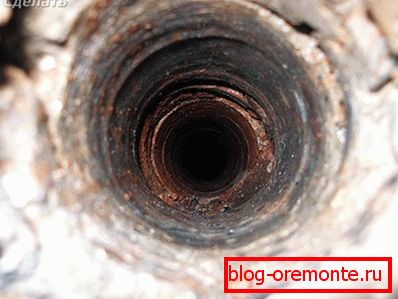
It may appear that water drilling can be performed under any circumstances. But it is not. For example, it is difficult to drill by this method in clay soil. In such a case, a toothed tip is put on the drill. As a result, two similar technologies are combined with conventional drilling and hydro-drilling.
The drilling process boils down to the fact that the drill bit gradually damages the surface of the soil, and the water erodes the rock. When clay soil such technology is most in demand.
The disadvantage of this system is that it is difficult to guess the drilling density of a particular section of rock. For this reason, soil is washed out from under the casing and from its outer side. But you can solve this problem simply by adding crushed stone.
As a consequence, the casing will have an additional fastening with the walls of the well. And the crushed stone itself prevents sand from entering the cavity of the well, fulfilling a partial role of a filter. However, after a while, the sand will start to penetrate anyway, so there is no way to do without cleaning.
We recommend to read:
- how to make an Abyssinian well;
- how to organize a pond in the country.
Video
Scheme
